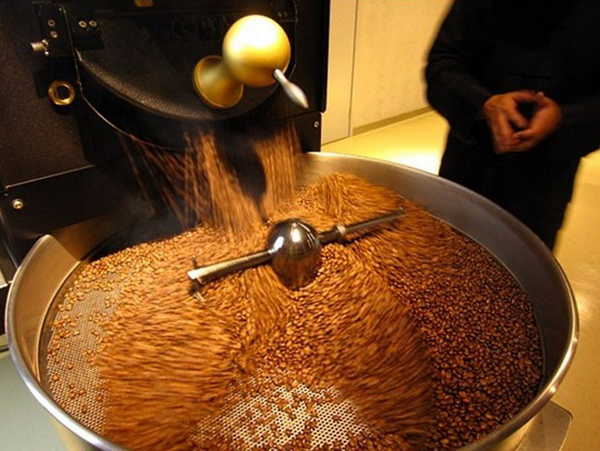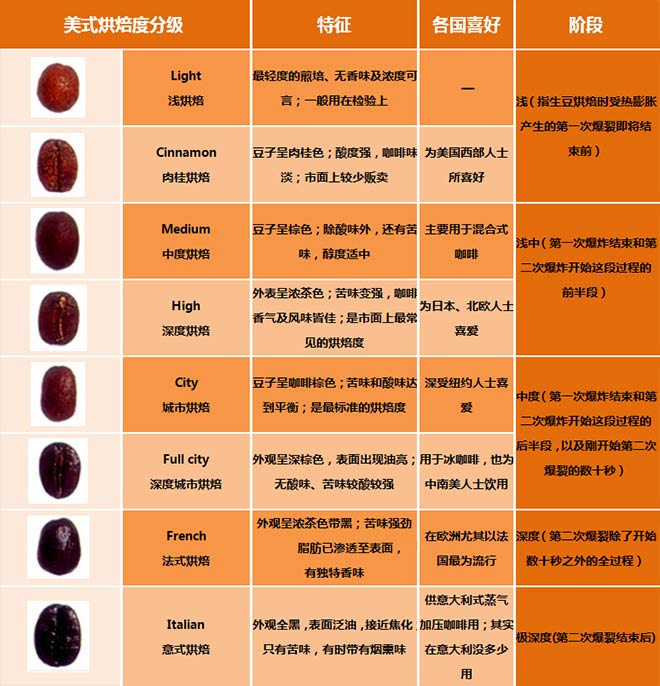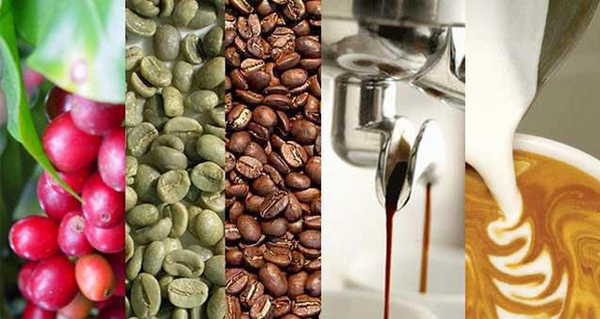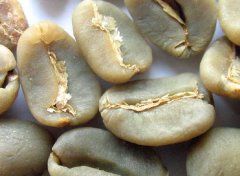Baking and mixing of high-quality coffee beans
When there are good coffee beans, the most important step to make them high-quality coffee is roasting and mixing.
In general, raw beans have a pungent earthy smell, and after the correct baking "fragrance", it will emit a strong aroma. In fact, raw beans contain 700 to 800 aromatic ingredients, which must be "awakened" by baking.
First of all, after baking more than 200℃, the water begins to evaporate, the volume expands by more than 50 per cent, and the weight is reduced by 10 per cent and 25 per cent depending on the degree of baking. The deeper the baking, the more weight loss.
In addition, raw beans release carbon dioxide during baking and will continue to exhaust within 30 days after baking. What is interesting is that this exhaust contributes to the preservation of coffee beans, because oxygen molecules are not easy to invade in this process, and the oxidation that destroys the flavor of coffee cannot be carried out. Then the exhaust gradually slows down after 7 days of baking, the oxygen molecules are easily attached to the bean table, and the coffee flavor is easy to decline, which is an important reason why coffee beans are best used up within a week after opening.
Professional coffee is generally roasted in small batches. The most common methods are: tympanic baking and hot air baking.
The drum roaster puts the coffee beans in a rotating vat and burns gas or wood to bake them. When the desired baking degree is reached, the coffee beans can be poured into a cooling funnel to prevent overbaking.

Figure: tympanic baking method
Hot air roaster, also known as fluidization air roaster, roasts coffee beans by rolling them in hot air. Most raw coffee beans are roasted at a temperature of nearly 400 degrees.
The roasting degree is roughly divided into shallow roasting, medium roasting and deep roasting, but there is no unified standard in the coffee industry. American baking degree classification is used at most in the industry, as shown in the following table:

Picture: American roasting grade of coffee beans
There are more than 100 coffee producing areas in the world, and their coffee beans have their own characteristics. The mixing of coffee beans is to balance the flavor of coffee in order to create an unparalleled delicacy.
A single coffee bean generally lacks the complex flavor necessary to make a delicious cup of coffee. Many blends contain three to seven different types of coffee beans. In Italy, for example, some Robster beans are added to mixed coffee to increase the complexity of its fat, caffeine and coffee flavor.
Roasters understand the characteristics of each kind of coffee beans and mix them artistically to create a desired new flavor. It is said that the knowledge of roasters mixing coffee beans is the highest industry secret.
But as for baking or mixing first, this has always been a controversial issue among bakers. Generally speaking, each product is roasted first and then mixed, which will maximize the different flavor characteristics of each kind of coffee and produce the best effect. The classic Blaser coffee beans launched by the Swiss coffee maker use this way to bring you the most delicious coffee.

Photo: Swiss Blaser Classic Coffee beans
Important Notice :
前街咖啡 FrontStreet Coffee has moved to new addredd:
FrontStreet Coffee Address: 315,Donghua East Road,GuangZhou
Tel:020 38364473
- Prev

The treatment of raw coffee beans common sense of fine coffee beans
After the coffee fruit is picked, the coffee bean must be removed from the coffee fruit as soon as possible. There are generally several ways to deal with it: washing, that is, the coffee fruit is immediately picked when it turns red, the hard peel is removed by machine, the sticky berry is exposed, and then thrown into the pool to ferment. In about a day or two, the bacteria will eat most of the flesh attached to the seeds. The whole fermentation process needs to be monitored by the old master.
- Next

The basic knowledge of coffee beans about Robusta coffee beans
"Robusta" coffee, commonly known as "sturdy beans", can be grown at low elevations (200 to 800 meters above sea level), has strong resistance to diseases and insect pests, is not vulnerable to agricultural disasters, has a high annual output per unit area, and is harvested in large quantities by machine. in general, the cost of production is much lower than that of Arabica coffee. "Robusta" coffee usually has an ordinary, rigid and pungent flavor, and because
Related
- Beginners will see the "Coffee pull flower" guide!
- What is the difference between ice blog purified milk and ordinary milk coffee?
- Why is the Philippines the largest producer of crops in Liberia?
- For coffee extraction, should the fine powder be retained?
- How does extracted espresso fill pressed powder? How much strength does it take to press the powder?
- How to make jasmine cold extract coffee? Is the jasmine + latte good?
- Will this little toy really make the coffee taste better? How does Lily Drip affect coffee extraction?
- Will the action of slapping the filter cup also affect coffee extraction?
- What's the difference between powder-to-water ratio and powder-to-liquid ratio?
- What is the Ethiopian local species? What does it have to do with Heirloom native species?

